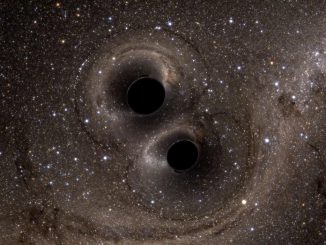
Researchers at the University of Manchester have used resources provided by GridPP — who represent the UK’s contribution to the computing grid used to find the Higgs boson at CERN — to run image processing and machine learning algorithms on thousands of images of galaxies from the international Dark Energy Survey.
The Manchester team are part of the collaborative project to build the Large Synoptic Survey Telescope (LSST), a new kind of telescope currently under construction in Chile and designed to conduct a 10-year survey of the dynamic Universe. LSST will be able to map the entire visible sky.
In preparation to the LSST starting its revolutionary scanning, a pilot research project has helped researchers detect and map out the cosmic shear seen across the night sky, one of the tell-tale signs of the dark matter and dark energy thought to make up some 95 percent of what we see in the universe. This, in turn, will help prepare for the analysis of the expected 200 petabytes of data the LSST will collect when it starts operating in 2023.
The pilot research team based at the University of Manchester was led by Dr Joe Zuntz, a cosmologist originally at Manchester’s Jodrell Bank Observatory and now a researcher at the Royal Observatory in Edinburgh.
“Our overall aim is to tackle the mystery of the dark universe — and this pilot project has been hugely significant. When the LSST is fully operating researchers will face a galactic data deluge — and our work will prepare us for the analytical challenge ahead,” said Sarah Bridle, Professor of Astrophysics.
Dr George Beckett, the LSST-UK Science Centre Project Manager based at the University of Edinburgh, added: “The pilot has been a great success. Having completed the work, Joe and his colleagues are able to carry out shear analysis on vast image sets much faster than was previously the case. Thanks are due to the members of the GridPP community for their assistance and support throughout.”
The LSST will produce images of galaxies in a wide variety of frequency bands of the visible electromagnetic spectrum, with each image giving different information about the galaxy’s nature and history. In times gone by, the measurements needed to determine properties like cosmic shear might have been done by hand, or at least with human-supervised computer processing.
With the billions of galaxies expected to be observed by LSST, such approaches are unfeasible. Specialised image processing and machine learning software has therefore been developed for use with galaxy images from telescopes like LSST and its predecessors. This can be used to produce cosmic shear maps. The challenge then becomes one of processing and managing the data for hundreds of thousands of galaxies and extracting scientific results required by LSST researchers and the wider astrophysics community.
A pilot exercise, led by Dr Joe Zuntz while at the University of Manchester and supported by one of the longest serving and most experienced GridPP experts, Senior System Administrator Alessandra Forti, saw the porting of the image analysis workflow to GridPP’s distributed computing infrastructure. Data from the Dark Energy Survey (DES) was used for the pilot.



